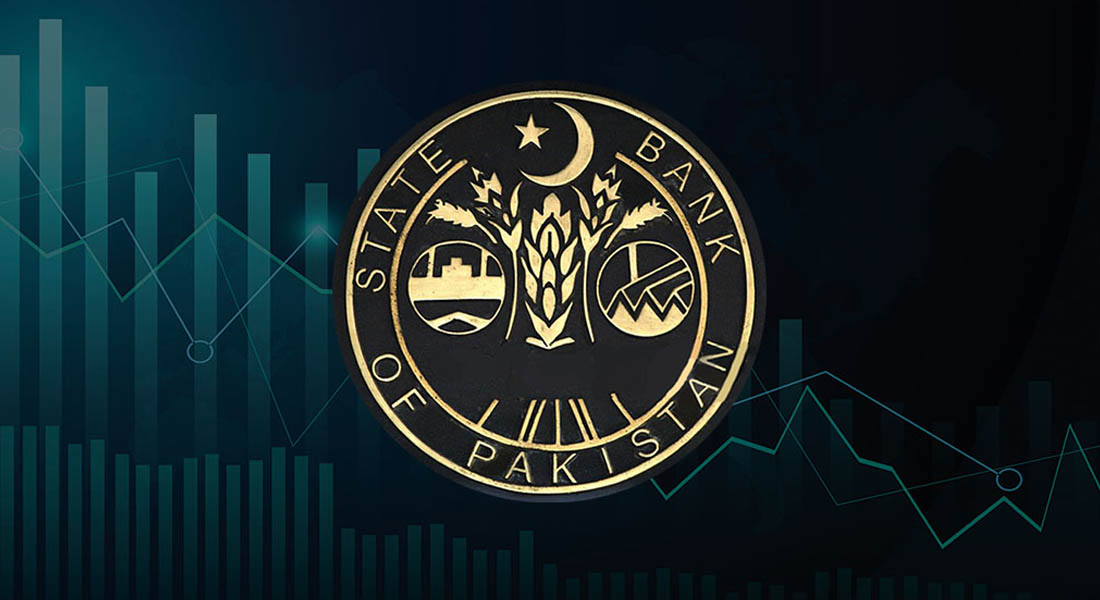Karachi/Islamabad: At its meeting today, the Monetary Policy Committee (MPC) of the SBP decided to reduce the policy rate by 100 basis points to 11 percent, effective from May 6, 2025.
The MPC noted a significant decline in inflation during March and April, primarily driven by a reduction in administered electricity prices and a continued downtrend in food inflation.
Core inflation also decreased in April, mainly due to favorable base effects amidst moderate demand conditions.
Overall, the MPC assessed that the inflation outlook has improved further compared to the previous assessment.
However, the Committee acknowledged that heightened global uncertainty surrounding trade tariffs and geopolitical developments could pose challenges to the economy. In this context, the MPC emphasized the need for a measured monetary policy stance going forward.
Key Developments Since Last Meeting
The MPC noted the following significant developments:
Real GDP Growth:
Provisional growth for Q2-FY25 was reported at 1.7 percent year-on-year, with Q1 growth revised up to 1.3 percent from the earlier estimate of 0.9 percent.
Current Account Surplus:
The current account recorded a substantial surplus of $1.2 billion in March, largely driven by record-high workers’ remittances. This surplus, along with the SBP’s FX purchases, helped cushion the impact of ongoing debt repayments on the SBP’s foreign exchange reserves.
Improved Sentiment: Recent surveys indicate further improvements in both consumer and business sentiments.
Tax Collection Shortfall: The tax collection shortfall has continued to widen.
Global Uncertainty: The IMF has downgraded its growth projections for 2025 and 2026 for both advanced and emerging economies due to tariff-related uncertainties, leading to increased financial market volatility and a sharp decline in global oil prices.
Monetary Policy Stance
On balance, considering the evolving developments and risks, the MPC maintained that the real policy rate remains sufficiently positive to stabilize inflation within the target range of 5-7 percent, while ensuring the economy grows on a sustainable basis.
Real Sector Outlook
Real GDP Growth
Provisional Q2-FY25 GDP growth was reported at 1.7 percent, bringing cumulative growth for H1-FY25 to 1.5 percent. This was in line with the MPC’s expectations. High-frequency indicators suggest that economic activity is maintaining momentum, as evidenced by:
- Rising sales of passenger vehicles and petroleum products (excluding furnace oil),Increasing electricity generation, Improving business and consumer confidence.
However, the MPC observed that Large Scale Manufacturing (LSM) performance has remained below expectations, particularly due to a sizable contraction in several low-weight sectors and construction-related industries, which outweighed growth in key sectors like garments, textiles, pharmaceuticals, and automobiles.
In agriculture, while wheat output was better than the target, it was still lower than the previous year. The MPC maintained its FY25 GDP growth projection in the range of 2.5-3.5 percent, with expectations for further acceleration in FY26.
However, this outlook is subject to risks, especially from global uncertainties and adverse weather conditions for the upcoming Kharif season.
External Sector Outlook
Current Account
The current account surplus for March 2025, driven mainly by record-high workers’ remittances, helped push the cumulative surplus for July-March FY25 to $1.9 billion.
The MPC noted that the moderation in the import bill, largely due to the reduction in global oil prices, coupled with continued growth in high-value-added (HVA) textile exports, also contributed to the March surplus.
However, for April, the committee highlighted that: (Further details regarding April developments would likely follow in the next section of the report.)
MPC Outlook: Trade Deficit Widens but Current Account, Inflation Trends Offer Some Relief
The Monetary Policy Committee (MPC) of the State Bank of Pakistan (SBP) has released a comprehensive update on the country’s macroeconomic outlook, expressing cautious optimism while highlighting key risks across external, fiscal, monetary, and inflationary domains.
External Sector and Current Account Outlook
Despite the Pakistan Bureau of Statistics (PBS) reporting a sharp increase in the trade deficit to $3.4 billion, the MPC maintains a relatively positive view of the external account.
This confidence stems from strong workers’ remittances, which have provided critical support.
The Committee expects the current account to remain in surplus during FY25, despite weak net financial inflows through March, which were largely due to heavy debt repayments and delays in official inflows.
However, the MPC projects that with the anticipated realization of planned official inflows, the SBP’s foreign exchange reserves could rise to $14 billion by June 2025.
The build-up is expected to continue into FY26, supported by a moderate current account deficit and improved financial inflows.
Still, the MPC issued a clear warning: this outlook is vulnerable to global economic uncertainties and volatile trade conditions.
Fiscal Developments
On the fiscal front, Federal Board of Revenue (FBR) tax collections saw a robust 26.3% year-on-year growth during July–April FY25, although collections still lag behind the target.
The government’s decision to increase the Petroleum Development Levy (PDL) is expected to boost non-tax revenues in the remaining months of FY25.
While total expenditures remained relatively controlled during July–March FY25, the MPC noted that achieving the primary surplus target remains challenging. It called for structural fiscal reforms, particularly through:
- Expanding the tax net, and
- Reforming State-Owned Enterprises (SOEs).
The Committee acknowledged the recent provincial legislation to enhance agriculture income tax collection, emphasizing the need for effective implementation to put the fiscal sector on a sustainable trajectory.
Monetary and Credit Conditions
Broad money (M2) growth accelerated to 13.3% year-on-year as of April 18, up from around 11% at the previous MPC meeting. This was driven by increases in both Net Domestic Assets (NDA) and Net Foreign Assets (NFA) of the banking sector.
In particular, private sector credit grew by 12.6% year-on-year, reflecting improved economic sentiment and easing financial conditions.
Increased borrowing was observed in key sectors such as textiles, refineries, chemicals, and fertilizers, while auto financing and personal loans also rose compared to the previous year.
Meanwhile, currency in circulation saw a temporary surge in March due to Eid-related seasonal demand, which has since partially reversed. This dynamic led to reserve money growth of 13.1% by April 18.
Inflation and Price Trends
Headline inflation continued its downward trend, falling to 0.3% year-on-year in April, largely driven by declining food and energy prices. Key contributing factors included:
- A sharp decline in wheat and related product prices,
- Moderation in global commodity prices, and
- A downward adjustment in electricity tariffs.
These developments helped ease inflation expectations among consumers. Core inflation, which had remained stable around 9% in recent months, also moderated to 8.0% year-on-year in April.
Looking ahead, the MPC projects that inflation will gradually inch up in the coming months but stabilize within the target range of 5–7%. However, this forecast is subject to risks, including:
- Volatility in wheat and food prices,
- Uncertainty in the timing and scale of energy price adjustments,
- Potential global supply chain disruptions, and
- An unpredictable commodity price outlook.
In summary, the MPC paints a cautiously optimistic picture for Pakistan’s economic trajectory, underpinned by easing inflation and improving external accounts. However, it emphasized that sustaining this progress will require:
- Timely external inflows,
- Effective fiscal reform implementation,
- Continued vigilance over inflationary pressures, and
- Navigating uncertain global economic conditions.









